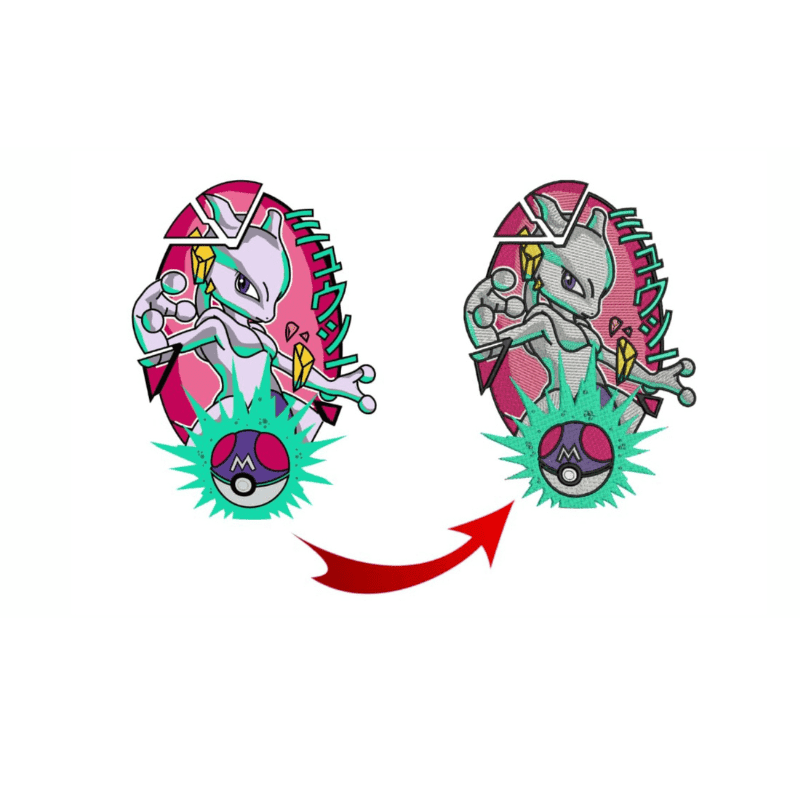Mastering the Needlework Digitizing Process: Your Ultimate Overview
Embroidery digitizing is a careful craft that requires precision and know-how to equate intricate layouts right into electronic formats for maker embroidery. As craftsmens embark on this journey to understand the embroidery digitizing procedure, a thorough understanding of the essentials sets the foundation for quality.

Understanding Embroidery Digitizing Basics
Embroidery digitizing essentials develop the foundation whereupon elaborate layouts are converted into machine-readable styles for exact sewing. This first action in the needlework digitizing procedure is crucial for guaranteeing that the last embroidered product is a faithful representation of the original style. Comprehending embroidery digitizing essentials involves understanding essential ideas such as stitch types, sew instructions, density, underlay, and pull compensation.
Sew types play an important function in figuring out the aesthetic and textural outcome of the embroidered style. By selecting the appropriate stitch kind, whether it be satin, fill, or running stitch, digitizers can accomplish the desired impact and boost the overall top quality of the embroidery. In addition, sew instructions influences the flow and dimension of the layout, while thickness establishes the spacing and protection of the stitches.
Additionally, padding sewing provides stability to the layout by protecting the fabric and preventing distortion during the needlework procedure. Pull compensation is an additional essential consideration to counteract the all-natural tendency of material to agreement when stitched. Mastering these embroidery digitizing fundamentals is basic for creating professional-quality stitched items.
Choosing the Right Digitizing Software
Choosing the suitable digitizing software program is a critical decision that substantially impacts the efficiency and high quality of the needlework digitizing process. Digitizing for Embroidery. When selecting the best digitizing software program, it is vital to take into consideration elements such as the complexity of layouts you plan to create, the user-friendliness of the software program, the level of customer assistance provided, and the compatibility with your embroidery maker
There are different digitizing software options offered in the marketplace, varying from standard programs for newbies to sophisticated software for specialist digitizers. Some popular selections consist of Wilcom EmbroideryStudio, Hatch Needlework Software Application, and PulseID. These software provide a large range of devices and attributes to assist you develop detailed styles with ease.
Prior to deciding, it is recommended to check out the various software alternatives with cost-free tests or demonstrations to establish which one best matches your needs. In addition, checking out reviews and seeking referrals from skilled digitizers can supply valuable insights right into the strengths and weak points of each software (Digitizing for Embroidery). By meticulously evaluating your demands and comparing the features of various digitizing software application, you can make an enlightened option that improves your embroidery digitizing workflow
Digitizing Tools and Techniques

Optimizing Layout Settings for Needlework
Understanding the complexities of style setups is basic in achieving ideal outcomes in the go right here embroidery digitizing process, structure upon the foundation laid by understanding digitizing tools and methods. When enhancing style settings for needlework, it is necessary to consider elements such as stitch type, density, padding, draw compensation, and registration. Sew kind option impacts the general feel and look of the design, with choices like satin, fill, and running stitches providing various textures and impacts. Density describes the spacing and thickness of stitches, affecting the design's insurance coverage and resilience. Proper underlay sewing gives stability and prevents material distortion, especially for complex layouts or on elastic materials. Draw compensation adjusts for material stretch during sewing, making certain precise style duplication. Enrollment settings align different elements of the layout accurately, preserving total style stability. By fine-tuning these design setups, embroiderers can improve the top quality and precision of their embroidered productions.

Troubleshooting Common Digitizing Issues
When experiencing usual digitizing concerns during the needlework procedure, it is necessary to anchor recognize the origin and apply reliable options immediately. One usual trouble is stitch density concerns, where stitches might be also dense, creating the textile to tighten, or too sparse, resulting in spaces in the layout. Changing the stitch density settings in the digitizing software program can assist settle this concern.
An additional constant obstacle is string breaks during the embroidery process. This can happen as a result of different reasons such as inaccurate tension settings, plain needles, or using low-grade string. Making sure appropriate upkeep of the needlework maker, consisting of normal needle changes and tension adjustments, can minimize the incident of thread breaks.
In addition, design registration mistakes can result in misaligned components within the needlework design. Checking the layout alignment in the digitizing software and making essential adjustments prior to sewing can help in preventing this issue. By dealing with these usual digitizing problems quickly and properly, you can guarantee a smoother embroidery procedure and high-grade ended up items.
Final Thought
Finally, grasping the needlework digitizing procedure calls for a strong understanding of the fundamentals, the best choice of software, and expertise of devices and helpful hints strategies. Maximizing design setups and repairing typical digitizing problems are essential steps in making sure high-grade embroidery outcomes. By complying with these steps faithfully, one can accomplish accuracy and effectiveness in the digitizing procedure.